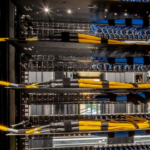The Athena Security Operations Center (ASOC), integrated into your Clandestine Site, empowers your High-Value Targets (HVTs) within the IT command structure to maintain secure operational oversight and tactical control of your corporate infrastructure. Utilizing advanced on-site Robotic Process Automation Nodes (RPANs), the ASOC enables a highly coordinated, military-grade command and control environment that can be used in Joint Operations with an Incident Response Team*.
ASOC enhances your teams capacity to execute incident response missions, track asset inventories, analyze critical data, and manage project operations in real-time. This advanced system incorporates specialized tools for firewall defense, network surveillance, and real-time threat detection, ensuring your infrastructure remains fortified, agile, and operationally resilient. The Athena Security Operations Center also supports proactive mission-critical performance monitoring, optimizing efficiency while safeguarding against downtime and tactical disruptions. With centralized control and integrated intelligence, your IT team is equipped with the resources necessary to respond rapidly, neutralize threats, and ensure uninterrupted continuity across your enterprise.
*Must have an IRT service subscription for on-demand integration with the Joint Operations Center.


















